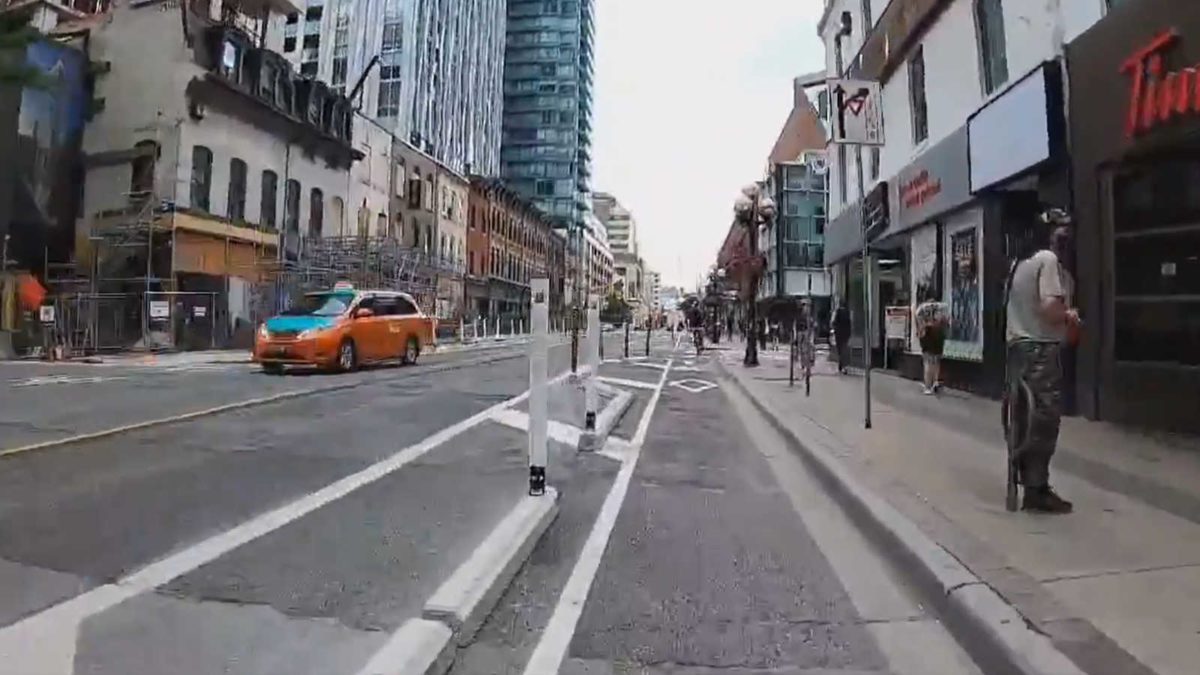Toronto bike lane pilot data: Cycling increases, slight rise in motorist trip time
A look at the ActiveTO program that began in 2021

The City of Toronto has released information about the pilot project that saw bike lanes on Yonge Street, one of the busiest streets in Ontario’s capital. The data shows there was an increase in cycling activity and pedestrians, as well as a small increase for vehicle trip times in the midday.
On Monday, the city released a statement that stated that cycling increased between 35 and 193 per cent in the pilot project area, during the May 2021 to June 2022.
On the busiest section of the project, there were 1,760 cyclists between 7 a.m. and 11 p.m. That is an increase of 1,160 riders.
These Toronto residents are purposefully blocking bike lanes
In terms of vehicles, there was a slight increase in travel with a 1.5-minute in trip time compared to travel times in pre-pandemic 2019. City staff said that during peak times–mornings and after work hours, there were delays of less than a minute. Most of the delays were on the northbound sections, presumably people going home from the office.
City of Toronto’s director of project design and management of transportation services department Jacquelyn Hayward, told CityNews that reactions from Torontonians has been mixed.
“There’s quite a bit of interest in that complete street design, being able to go outside and sit on a patio on Yonge street, improved safety being able to bike and the feeling of safety that pedestrians have when they’re a little bit further away from moving traffic with the buffer of the bike lane there,” she said. “There are also some concerns from local residents who live in the area who are trying to access Yonge Street, so we are continuing to monitor those data points in order to present recommendations back to council early in the new year.”
